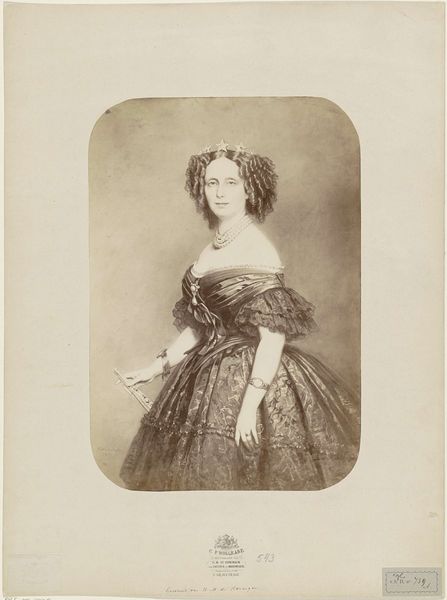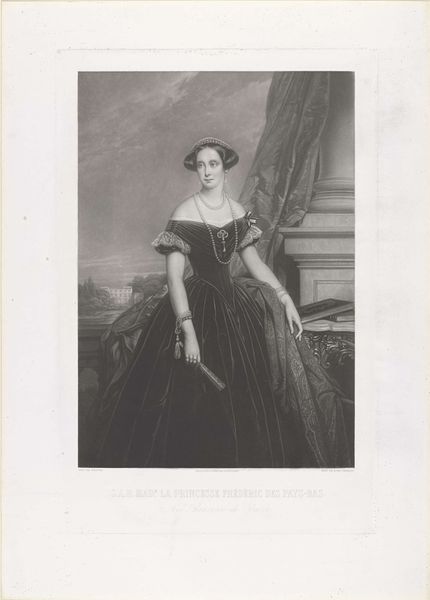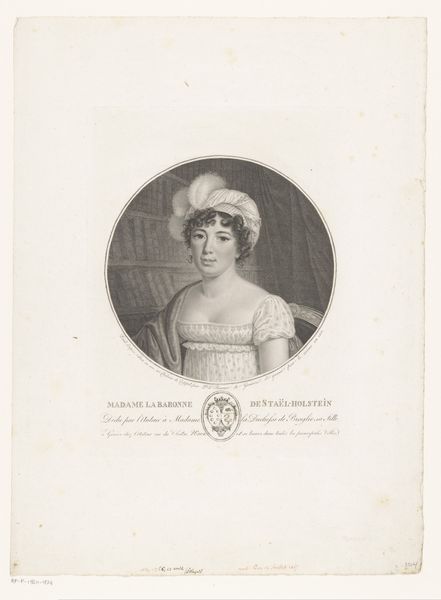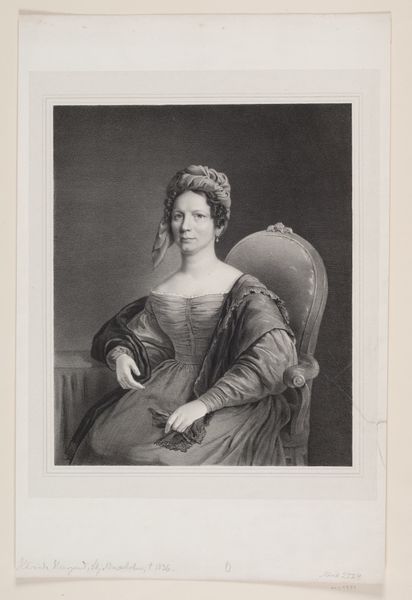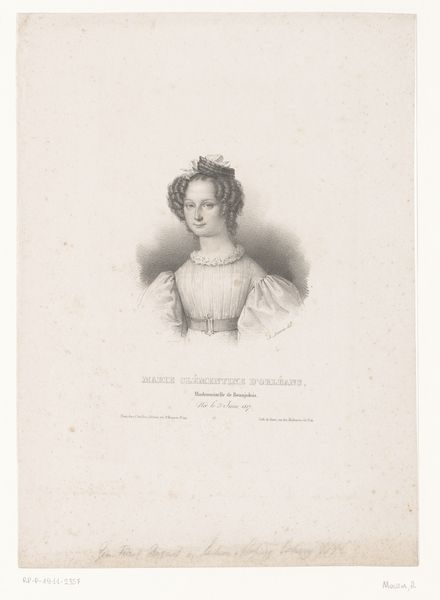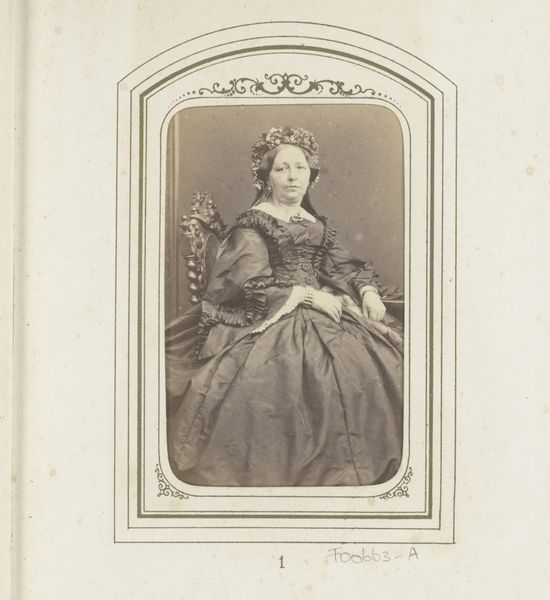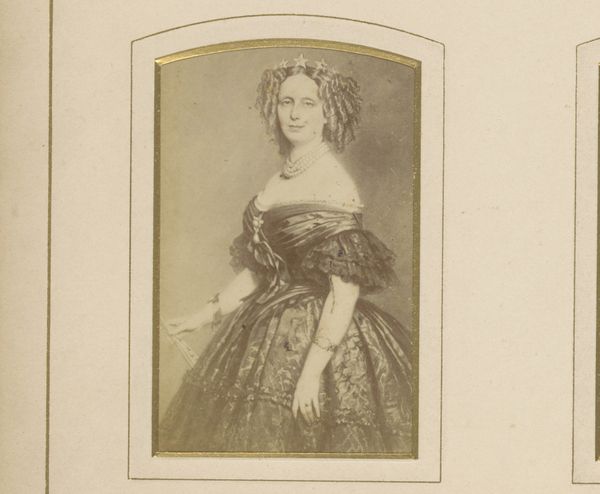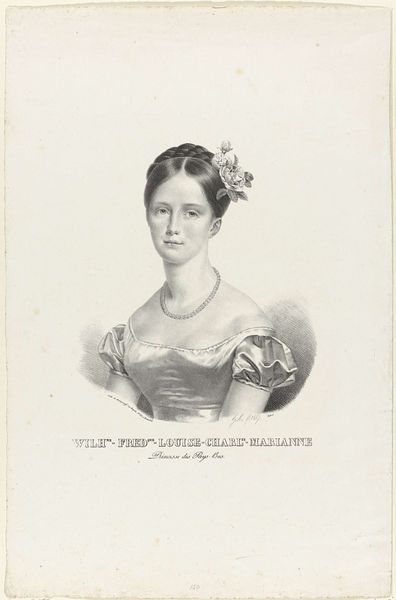
Portret van Amalia van Saksen-Weimar-Eisenach 1853 - 1871
0:00
0:00
Dimensions: height 820 mm, width 583 mm
Copyright: Rijks Museum: Open Domain
This is a portrait of Amalia van Saksen-Weimar-Eisenach, made by Franciscus Bernardus Waanders in the nineteenth century, using lithography. Lithography is a printmaking process that relies on the contrast between grease and water. The artist draws an image on a flat stone or metal plate with a greasy substance, then applies water, which adheres only to the non-greased areas. Ink is then rolled over the surface, sticking only to the greasy image, which is then transferred to paper. Lithography enabled the relatively quick and cheap reproduction of images. This was very significant for popularizing imagery at the time. Look at the immense amount of detail in this print, emulating the effect of a finely rendered drawing. The lithographic technique is particularly well-suited to capturing tonal subtleties, visible in the delicate rendering of Amalia's dress, jewelry, and facial features. Consider the skilled labor involved in producing such a detailed print, and the social context of its creation. Waanders’ lithograph provides insight into the materials, processes, and social context of nineteenth-century portraiture, challenging traditional distinctions between fine art and craft.
Comments
No comments
Be the first to comment and join the conversation on the ultimate creative platform.
